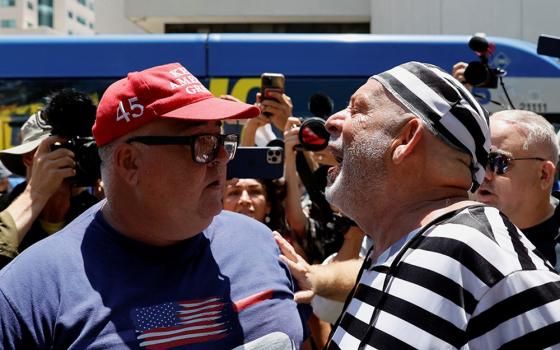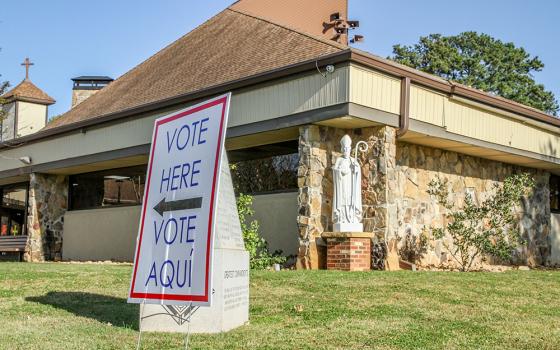Catholics and other Christians profess their faith in “the resurrection of the dead and the life of the world to come.” Like so many of the creedal statements, however, they can easily degenerate into religious boilerplate, which is to say that they can become no more than empty words, “full of sound and fury, signifying nothing” (Shakespeare, Macbeth, V, 17).
Christians come face to face with the meaning of these creedal words when a loved one dies. Is there really life after death? Will we ever see our loved one again? Do we really believe in Jesus’ Resurrection and our participation in it?
Many people of good will answer “No” to each of these questions. Many Jews, for example, believe in the survival of the community but not of the individual.
For Christians, however, belief in the resurrection of each individual person is grounded in the Resurrection of Jesus Christ and is, therefore, a central tenet of Christian faith.
The most extensive treatment of the nature and significance of the resurrection (upper-case and lower-case alike) is in St. Paul’s First Letter to the Corinthians, chapter 15.
“But if Christ is preached as raised from the dead, how can some among you say there is no resurrection of the dead? If there is no resurrection of the dead, then neither has Christ been raised....For if the dead are not raised, neither has Christ been raised” (vv. 12, 16).
What Paul does here is invert the theology: the resurrection of the dead is not only grounded in the Resurrection of Jesus, but the Resurrection of Jesus is also dependent on the resurrection of the dead.
Then comes one of the classic declarations in all of the New Testament: “And if Christ has not been raised, then empty is our preaching; empty, too, your faith....your faith is vain; you are still in your sins”(vv. 14, 17).
We must be careful, however, not to confuse the well-known Pauline distinction between the flesh and the spirit (see Romans 8:1-13) with the distinction, born of Greek philosophy, between the body and the soul.
Human persons, not simply “souls,” are saved by God and raised to new life. The resurrection stories are insistent not only on the bodiliness of the event but also on the transformation of Jesus’ risen body. After the Resurrection, his disciples did not recognize him at first (Luke 24:16).
“Paul concludes that God, who provides us with the kind of body appropriate to this life, will also transform it in a way appropriate to the new life of the kingdom of God [First Corinthians 15:42-50]. How this happens remains a mystery.” (John R. Sachs, “resurrection of the body,” The HarperCollins Encyclopedia of Catholicism, Richard P. McBrien, general editor, HarperSanFrancisco, 1995, p. 1111.)
John R. Sachs, (better known to his fellow Jesuits, students, and friends as “Randy”) points out that Christians of Paul’s generation believed that the Second Coming of the Risen Lord and the resurrection of the dead were imminent. But as this expectation faded, the question about the fate of those who had already died became acute.
Later New Testament writings offered the assurance that the dead were with God, but eventually Christian theology was overtaken by the body/soul distinction found in Greek philosophy.
The human self, who survives after death through the “soul,” awaits the final judgment when the soul will be united with the body. This mentality was enshrined in church doctrine by such councils as Lateran IV in 1215, Lyons II in 1274, Vienna in 1312, and Florence in 1439.
More recently, the Congregation for the Doctrine of Faith confirmed this teaching in 1979, even though the Second Vatican Council’s Pastoral Constitution on the Church in the Modern World (Gaudium et spes) qualified this distinction, insisting that “The human person, though made of body and soul, is a unity” (n. 14).
“The body,” Father Sachs writes, “symbolizes the connection that human beings have with each other and with the earth....There can be no salvation apart from the body, the community, and the world.”
The debate about the time of the resurrection of the dead is ongoing. The two sides are represented, on the one hand, by Karl Rahner, S.J. (d. 1984) and Joseph Ratzinger (now Pope Benedict XVI), on the other.
Rahner holds for the resurrection at the moment of death, while Ratzinger maintains the more traditional view that the resurrection happens only at the end of history, when all experience the General Judgment.
Meanwhile Christians hold fast to their faith in “the resurrection of the dead and the life of the world to come.”
[© 2011 Richard P. McBrien. All rights reserved. Fr. McBrien is the Crowley-O’Brien Professor of Theology at the University of Notre Dame.]
| Editor’s Note: We can send you an e-mail alert every time Fr. McBrien’s column, "Essays in Theology," is posted to NCRonline.org. Go to this page and follow the directions: E-mail alert sign-up. If you already receive e-mail alerts from us, click on the "update my profile" button to add "Essays in Theology" to your list. |



